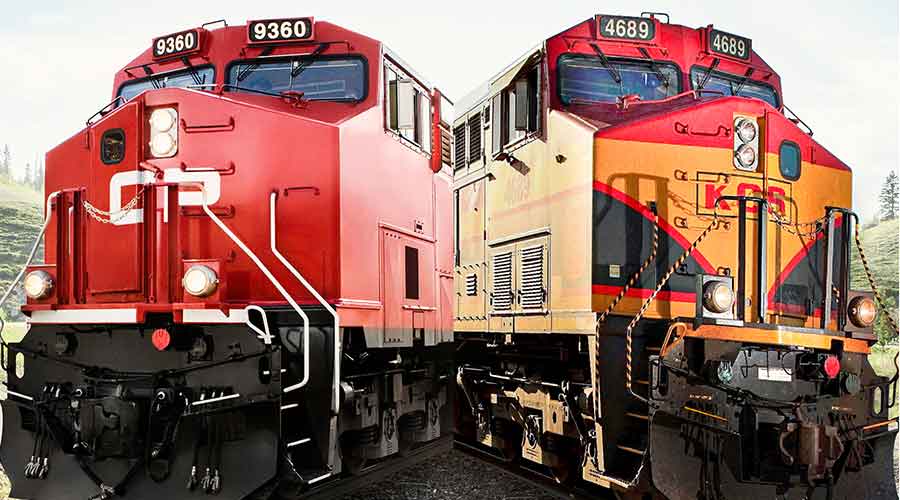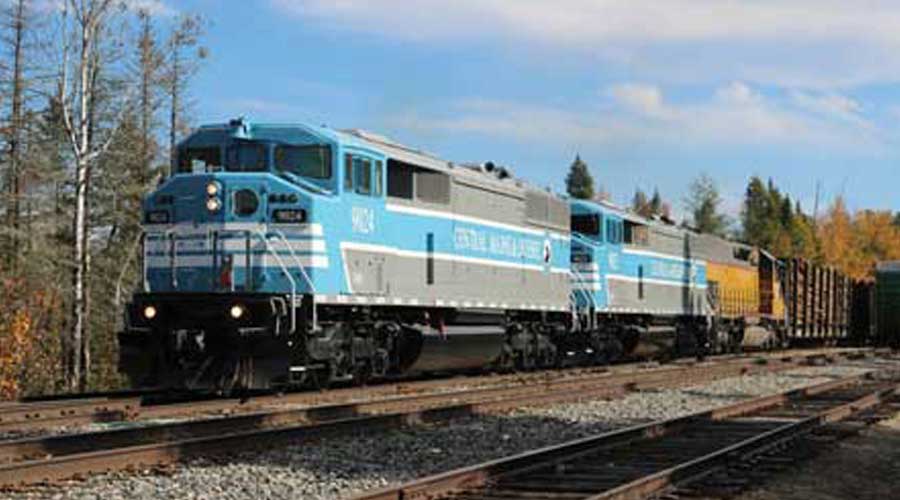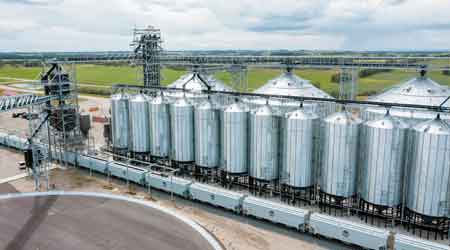Stay updated on news, articles and information for the rail industry
November 2015
Rail News: Canadian Pacific
Canadian Pacific modifies Minnesota hump yard to handle longer trains

Over the past several months, crews have completed many sitework tasks for the track extensions at CP's St. Paul yard, such as a number of earth-moving maneuvers.
By Jeff Stagl, Managing Editor
The last hump yard in Canadian Pacific’s network is about to gain new infrastructure aimed at improving efficiency. In November, crews will begin laying rail and installing ties to extend six receiving tracks eastward from the yard in St. Paul, Minn.
Extending the tracks from 6,100 or 7,400 feet to about 10,000 feet will enable inbound trains to be staged in the yard on a single track, reducing or eliminating the need for car switching. The longer tracks also will match the length of network sidings to the west, helping support an ongoing effort to lengthen trains, says CP spokesman Andy Cummings.
“We’re working to get the most out of our equipment and infrastructure, and longer trains help us do that,” he says. “To run longer trains, we need longer tracks on which to build and meet them.”
A combo deal
Over the course of this year, CP has focused on lengthening nine sidings to 10,000 feet or longer on a mainline between the Twin Cities and the Canadian border at Portal, N.D. Combined, the longer sidings and yard tracks will add capacity to help make the railroad more efficient and business-growth oriented, says Cummings.
The project calls for installing about 36,000 feet of 136-pound continuous-welded rail, 9,100 wood ties and several No. 11 turnouts. Work is slated for completion by year’s end.
St. Paul Yard features 36 classification tracks and nine departure tracks in addition to the receiving tracks. The facility averages about 1,500 humped cars per day.
Yard workers build manifest trains for various destinations in western Canada, such as Coquitlam, British Columbia; Moose Jaw and Sutherland, Saskatchewan; and Edmonton, Alberta. In addition, trains are built to head east to Bensenville, Ill., the Belt Railway Co. of Chicago’s yard and Kansas City, Mo.
“[The yard] is also key to making connections between mainline trains and customers in Minnesota and Wisconsin,” says Cummings.
Notable nuance to railroad's project
The extensions to the receiving tracks — which are bounded by Pigs Eye Lake to the west, and a trunk highway and tracks owned by BNSF Railway Co. to the east — are the most significant change to the yard since the hump was installed in the 1950s, he says.
The St. Paul facility is CP’s last hump yard. The Class I has closed a number of them the past three years, including hump yards in Bensenville; Toronto; Calgary, Alberta; and Winnipeg, Manitoba.
In 2012, Chief Executive Officer E. Hunter Harrison headed a review of how manifest trains were built at hump yards. The analysis found that the yards — which opened in the 1950s and 1960s — were more vital many years ago, when the Class I’s traffic mix was different, and virtually all rail cars needed to be switched and classified.
Now, CP mostly moves unit trains of various commodities — including coal, grain, sulphur, potash and some merchandise — that don’t require switching. The railroad currently switches 25 percent to 30 percent of all cars versus 80 percent-plus 50 years ago.
Since he believed CP’s infrastructure was out of date, Harrison set in motion the yard-closing plan to not only cut costs, but help boost the railroad’s competitiveness by making the network faster and more efficient.
Keywords
Browse articles on Canadian Pacific hump yards CP hump yard St. Paul E. Hunter Harrison BNSFContact Progressive Railroading editorial staff.


 2025 MOW Spending Report: Passenger-rail programs
2025 MOW Spending Report: Passenger-rail programs
 Gardner steps down as Amtrak CEO
Gardner steps down as Amtrak CEO
 Guest comment: Oliver Wyman’s David Hunt
Guest comment: Oliver Wyman’s David Hunt
 Women of Influence in Rail eBook
Women of Influence in Rail eBook
 railPrime
railPrime








